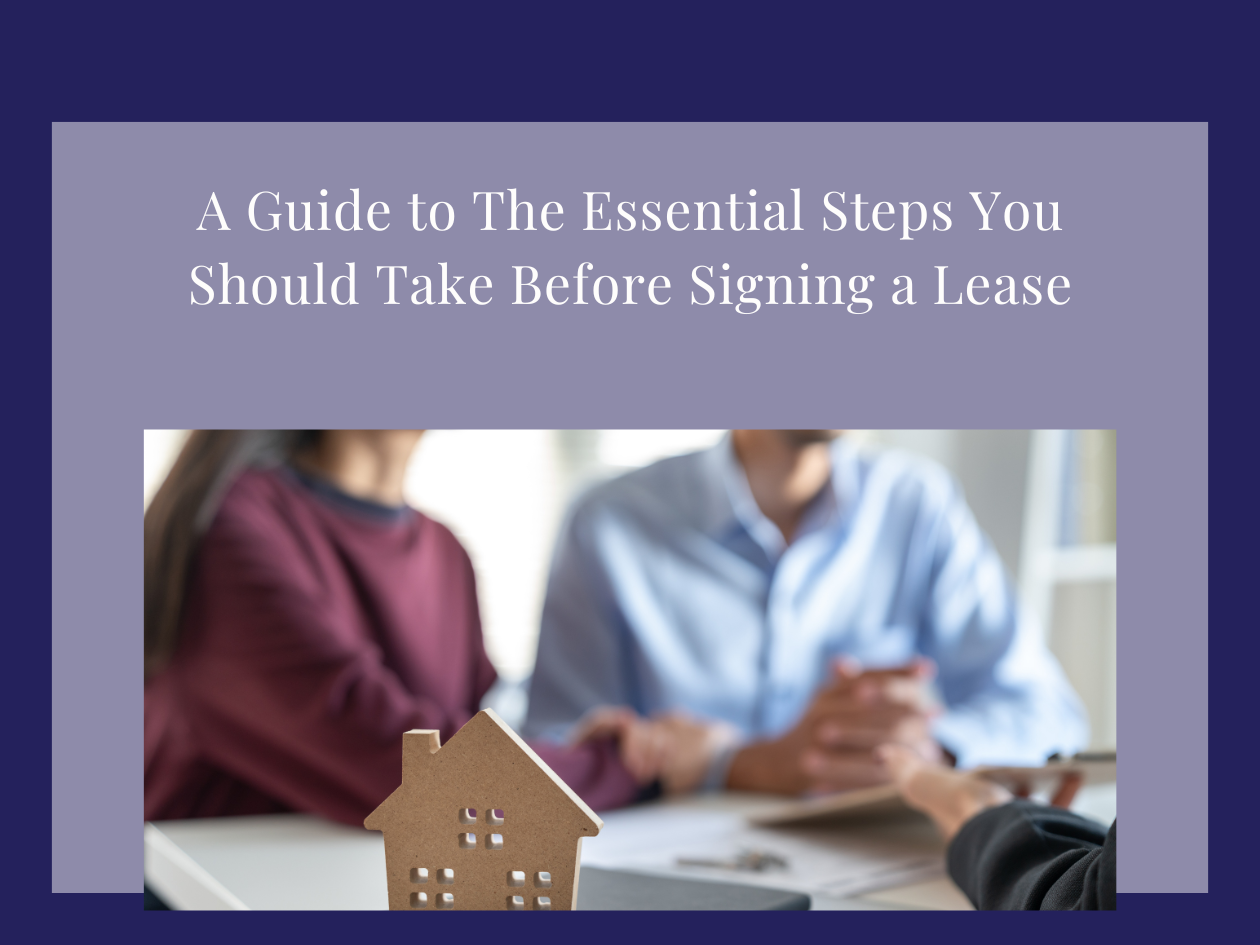Signing a lease is a significant commitment, particularly because it legally binds you to a property for a set duration. To avoid future complications and ensure that your rental experience is as smooth as possible, it's crucial to take several key steps before putting pen to paper. Here's a guide to the essential actions you should take before committing to a lease.
1. Thoroughly Inspect the Property
Check for Damage and Functionality: Before agreeing to rent a property, conduct a thorough inspection. Look for any signs of damage and check that all fixtures and appliances are in good working order. Ensure that windows and doors lock securely, taps and toilets run properly, and that there are no issues with the heating and cooling systems.
Document Everything: During your inspection, take detailed notes and photos of any damage or wear and tear. This documentation can be crucial if disputes about the condition of the property arise when you move out.
2. Understand the Lease Agreement
Read Every Clause: It’s vital to read the lease agreement carefully. Pay special attention to clauses about termination, as you’ll need to know under what conditions you can break the lease and the penalties for doing so.
Ask Questions: If there’s anything in the lease that you do not understand or agree with, don’t hesitate to ask for clarification. It’s important that you fully understand your rights and responsibilities as a tenant.
3. Negotiate the Terms
Lease Duration and Renewal Options: Consider whether the lease duration suits your needs. Some leases offer the possibility to renew, which can be beneficial if you like the property and don’t want to move after a short period.
Rent and Deposits: Don’t be afraid to negotiate the rent. Sometimes, landlords are willing to lower the rent if you sign a longer lease or start your tenancy at a less busy time of year. Also, make sure that you understand the terms regarding the deposit and any conditions for its return.
4. Understand the Fine Print
Subletting and Roommates: Check the lease for policies regarding subletting and roommates. Some leases restrict or prohibit subletting, and you may need to get permission before having someone move in with you.
Modifications to the Property: Find out what modifications you are allowed to make to the property. Some landlords allow painting or hanging pictures, while others may prohibit changes.
Utilities and Maintenance: Clarify what utilities are included in the rent and which ones you are responsible for. Also, understand your responsibilities regarding property maintenance and whom to contact for repairs.
5. Research the Area
Local Amenities and Transport: Explore the neighbourhood to ensure it meets your needs regarding shops, public transport, parks, and schools.
Safety and Community: Check local crime statistics and talk to neighbours to get a sense of the community’s safety and friendliness.
6. Prepare for the Financial Commitment
Budget Accordingly: Make sure you can comfortably afford the rent along with your other expenses. Don’t forget to include utility bills, internet, and any other recurring costs.
Emergency Fund: It’s wise to have a financial cushion in case you encounter unexpected expenses or changes in your income.
Conclusion
Signing a lease should never be done in haste. Taking the time to thoroughly inspect the property, understand every part of the lease, negotiate terms, and familiarise yourself with the neighbourhood can protect you from future problems and ensure that your rental experience is positive. Always approach this process with due diligence and careful consideration.
Need a hand? Contact us here for expert advice.






Share this with
Email
Facebook
Messenger
Twitter
Pinterest
LinkedIn
Copy this link